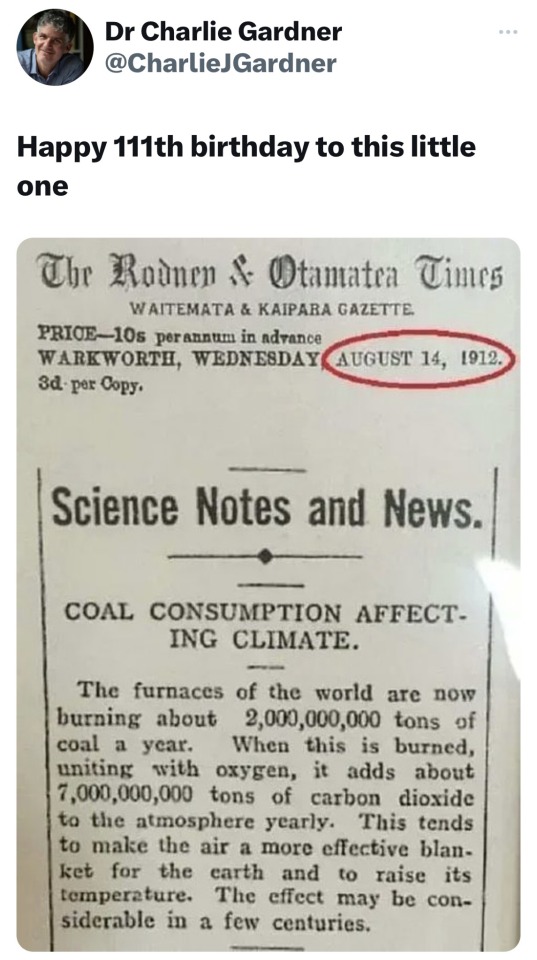Text
Global Climate Strike - What I´ve got to say
I thought I´d share the speech that I made today at my city´s climate strike. It went quite well and I hope that in this way I can reach a few more people. :)
Hello and thank you all for coming! My name is Sam, I´m here with and on behalf of Klimatstudenterna, a student association at the university.
When I joined the association, it was out of a desire to meet people who think like me and who care as much about this planet and its incredible, unique nature as I do. I grew up in the alps and I´m spending a lot of time biking, hiking, kayaking, trekking, and diving through this diverse and awe-inspiring wonderland that we call home. But I´ve also been aware of its problems since the age of seven, and now that I´m studying environmental engineering, I´m closer to the gruesome reality that we face than ever before.
We are living in a time of change, and time to change the direction in which we are going is running short. However, today I don´t want to focus on all the negative effects that we are having on this planet, but to offer a change of perspective.
For most of humanity´s existence, we´ve been at nature´s mercy. At the mercy of the weather, of bad harvests, of the seasons and the animals that competed with us for food and shelter. All of that has changed within less than two centuries. Scientists have declared that the stable period that allowed us to become what we are today, has ended. The Holocene, the geographical age that we´ve been living in for the past 10.000 years, has ended, and we have entered the Anthropocene, the age of humans. Because we are the factor with the greatest influence on planet earth. That is a scary thought. We are no longer cradled within the embrace of the big wide world, the world is depending on our decisions to thrive. Or not to thrive, because this will not be the case for long. In a short few years, climate change will be the decisive factor that will change the face of the earth. We´ve sown wind, and we´ll harvest storm. Maybe more storm than we can take.
However, the window is still open to do something about that. We are in the age of the Anthropocene, and it is up to us to decide in which way we want to shape the planet. Do we want to exploit and deforest it? Or do we want to give that space back to the wilderness? Do we want to keep polluting the oceans with plastic, phosphorus and PFAS? Or do we want to protect and clean them, so our children will experience clear waters and abundant marine live, like our grandparents did. Do we want to be the destructors of this planet? Or its shepherds?
It is a great responsibility, and I don´t like the thought of humanity being this powerful, but it´s time to feel responsible for all the living things out there, because it really is up to us. We have to decide if we want to be the shepherds or the destructors of this planet. We have to decide that as a species, as a country, as a region, as a commune, and also as individuals. Likewise, every bit of climate action is needed, global action as much as nationwide, regional, communal, and individual action. At the same time, because there is no time to dawdle and argue about who should fix it, EVERYONE should fix it, in their own way and capacity.
Be it biking to work, be it investing in clean energy. Be it voting in favor of the environment in the upcoming EU-election, and any other election, or be it voting in favor of the environment as a part of the EU-parliamen, or any other parliament. Be it making informed purchase decisions, or maybe not purchasing anything at all. Be it growing tomatoes on your balcony or turning your mass production pig farm into a mushroom farm. From parliaments to nursing homes and from work places to living rooms, there is something that everyone of us can do right now to fix this.
I want to be a shepherd of the earth.
What about you?
#climate change#environmentalism#climate action#climate crisis#climate strike#nature#environment#global strike#hope
3 notes
·
View notes
Text

DR ADAM LEVY ClimateAdam
ROSEMARY MOSCO
27K notes
·
View notes
Text
How is electricity actually made? - The Rankine Cykle
What do biomass power plants, coal power plants, concentrated solar power plants, nuclear power plants and dry steam geothermal power plants have in common? The Rankine Cykle.
When I learned about this system, the first question that I asked myself was "how can it be that this is the first time I´m learning this", because it´s such an important element to electricity production. It made me realize that I actually don´t know how electricity is produced, for example in a coal power plant, or in a nuclear power plant, or in a biomass power plant. And the answer is... We cook water.
Okay, it´s not quite that simple, but also not a lot more complicated. Let´s look at it in detail:
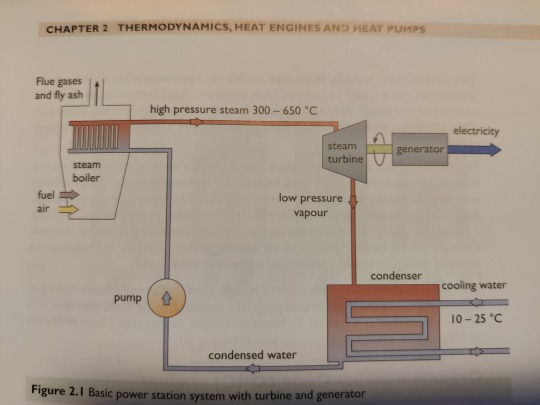
(Source: S.Peake (2018): Renewable Energy. Power for a sustainable future. 4th edition. Oxford University Press.)
The first step is the pump. Here, water gets pumped into the system. The water gets pumped into a steam boiler where it gets cooked, so turned into pressurized steam. And that´s what the energy source is for! Be it coal, nuclear, biomass, solar, it´s used to heat water. This pressurized steam is then led through a steam turbine, which generates electriycity. The now low pressure vapour (which is still very hot) is lead through a condenser, to be turned back into water, which then reenters the cykle. Since the cooling water in the condenser is warmed up during the process, it can be user for district heating, which preserves some of the energy that isn´t being used in the steam turbine.
The whole process is not perfect, the level of efficiency which we used to calculate with in our classes and which is for example given for nuclear power plants here is about 33%. That means that only one third of the energy that is used for heating the water is actually turned into electricity. It gets a bit better if you use the residual heat for district heating, but the rest of the energy is lost. The system works essentially the same for everything you burn to produce heat, coal, biomass etc. It works a bit different for nuclear, where it´s the excess heat of the nuclear fission producing the heat, and in concentrated solar power plants, the heat from the sun melts salt, which is then used to produce stem. This enables the solar power plant to produce electricity even at night, since the salt can keep the heat for a few hours.
I think in order to decide which kind of energy production we should be using, it is important to know how they work. I was surprised how little I knew about the Rankine cycle as the general principal of energy production and I hope that I can spread the knowledge a little bit further.
Source: Source: S.Peake (2018): Renewable Energy. Power for a sustainable future. 4th edition. Oxford University Press. Pages 33-35.
Rankine Cycle - Steam Turbine Cycle | Characteristics | nuclear-power.com
#environmentalism#science#climate change#climate action#rankine cykle#physics#energy production#clean energy#renewable energy#fossil fuels#climate crisis
5 notes
·
View notes
Text
Why am I here? It´s storytime
Today I want to write about something different. About something personal. About the reason this blog exists and why I´ve created it in the first place. About nature and love and anger and hope.
In 2020, the profile picture of this blog was taken:

It was taken on a solo hike through Sweden, a hike that didn´t go as planned from the beginning, but couldn´t possibly have been more impactful and fantastic and marvellous than it was.
I wanted to follow the Southern Kungsleden, a hiking path from the southernmost mountain ranges in Sweden northwards. I had planned this meticulously, every single day, every grocery store availiable (there were three spread out over the 18 day hike), every ecological zone I would be in, every possible spot to spend the night. And I got stopped in my tracks on day two, because I landed in the middle of snowmelt and bad weather and it just wasn´t doable, even less so alone. I had to reconsider, get out of there, back to safety, and plan again. And when I set out on the second part of that adventure, after a few chaotic days, my planning consisted only of a biking map in a way too big scale to be of any use, the actual map, diverted into 10 pdf´s on my phone, and a vague scrolling through a few travelling blogs.
The second hike was the Siljansleden, a hiking path around one of the biggest lakes in Sweden (but when they say "around", it means, 30 kilometers away from it and then back in a biiig sweep). It was me, alone, in deep forest, populated by moose, wolves, bears, wolverines, lynxes, and many other things that hikers are afraid of. But you still have to sleep somehow, so you have to find your peace with that. And I did it by seeing myself as just one more creature of that forest going about my business. Trying not to bother anyone. Trying not to get into anyones way. Just one of the many beings roaming the vast forests, not to disturb and not to be disturbed. I slept in a tent in the middle of the forest, and in the depth of night, when nothing was to be heard but the whistle of the wind in the trees, when the bright midsummer night spread a soft, shadowless light around, I felt safe, calm and deeply at peace.
And so I went on, for 2 weeks, alone with the forest except for 2 stops in small towns where I stocked up on food and rest. Just me and the forest and the occasional chat with a friendly stranger. I encountered animals of different kinds (including a lynx, that was magical, but to be alone with a cat whose head is almost as big as yours at 2,5 meters distance in the middle of the night is, let´s say, INTENSE). I had good and bad and fantastic days, and while I wouldn´t necessarily say that hiking alone in the wilderness is an easy life, it is a simple one: stay warm, stay fed, stay hydrated, stay dry, and keep putting one foot in front of the other. During those two weeks, I turned from a stranger and a visitor in the forest to someone who was at home there. Coming back to civilization afterwards was shocking and jarring, as dramatic as that sounds. I had to walk along a road to the campground in the town of my destination, it was 1,5 kilometres and it almost drove me to tears. The asphalt was too hard and too hot, the sun getting reflected off of it weirdly, the road wasn´t even super busy, but the cars where so loud and it was just TOO MUCH! Was that really meant for us humans to live in? Why? It took a long time to get used to it again, and I never did the way I was before. I also never step into a forest in the same way I did before. Even though I don´t think I could immediately sleep as calmy out in the forest as I did then, the feeling of being at home there still echoes. I know it´s possible. I know what it feels like, to just be one more creature of the forest, to be embraced by it. I know if I went back for a few days, I would feel the same simplicity and joy and peace again. Now, imagine what it feels like when that forest is cut down.
There was a strip of forest that was a former nature reservation close to where I live. Ten acres of it got cut down last year to built a bigger road with three roundabouts. I´ve known this patch of forest. I biked on a trail in it back from work. I´ve explored it with skis and by foot and collected mushrooms there. It was beautiful and it was erased for a stupid road project that won´t solve any of the problems it´s being built for, because bigger roads have seldomly led to less traffic, quite the opposite. We protested, we talked with the city government, we screamed and begged, but it still happened. Our local community then met up after the forest was cleared, to celebrate our activism if nothing else, to mourn together and to find comfort in community. I went there and I saw the destruction and I was FURIOUS! I´m normally a positive, peaceful person, but that made me just BURN with anger. I wanted to DO something, SCREAM at someone, throw a molotov cocktail into the office of the municipality and watch it burn, just as they had watched that forest fall without feeling anything. Quite possibly without knowing what they had destroyed, because they had never been in or with the forest in the same way. I was so incredibly angry and I wanted SOMEONE who was responsible for this to hurt as much as I did. And then I started to collect cones. Because more destruction wouldn´t lead anywhere and because I wouldn´t change anything by being sued for vandalism. It wouldn´t make anything better. But I collected cones and dried them and put the seeds in one of the planting pots on my balcony. And now I wait and hope that they´ll grow in the spring and that I will find a safe place for them to grow big. The trees that were growing in that spot are gone, but maybe their offspring will have a chance.
I still struggle with that anger. It makes me hateful and cruel and I think about spitting that hatred into the faces of every person responsible for environmental destruction. But I start to understand that this anger is not leading anywhere good. My mom once told me a proverb that says "holding a grudge is like poisoning yourself and hoping the other person dies". Being angry won´t lead anywhere and throwing that anger at the immovable wall that is world politics is only going to leave me drained and depressed. So I try to put my energy somewhere else. Planting trees. Working together with the local activist group. Finishing my studies and working for a better future. I still get angry. But I will try to channel it in a different way. Like writing a blog post about it and trying to update more often to spread the knowledge I gained at university and elsewhere.
Thank you for reading this far and I hope you have a wonderful day!
(PS: if by any chance (which is close to 0) that story about the hike sounded familiar, I do have a side blog where I wrote about it before, named @theopeneye)
#environmentalism#climate change#nature#forest#hiking#activism#deforestation#sustainability#feeling emotional about trees
4 notes
·
View notes
Text
PLEASE READ!!! I DON'T POST STUFF LIKE THIS AND THIS IS SERIOUS TO ME! ELON MUSK IS TRYING TO DUMP THOUSANDS OF GALLONS OF WASTE WATER INTO THE LAGUNA MADRE IN SOUTH TEXAS!!!
The Laguna Madre is a beautiful ecosystem that houses so many species of wild life and many migratory species of shore birds go there to eat and rest. Its all thanks to the sea grass that grows there, and after the big freeze of Texas in 2021, it is slowly making its recovery and now it's in danger again!

(Black Skimmer with chicks shown here)
If Elon continues with this disguising act, nitrogen and hydrogen rich waste will be dumped and plankton and algae will begin to overpopulate and create a cloud of themselves over the sea grass causing it to not get the sunlight it needs to photosynthesize. It will basically be suffocated by the overpopulation of microorganisms and die out and so many species of animals will lose that shelter they need to feed, breed and even escape dangers like predators. This grass also feeds the endangered green sea turtle and was even given the name "Turtle Grass" for its huge importance to these creatures.

(Green Sea Turtle grazing)
Not only that, but the South Padre Island is one of the largest ports in America and has many shrimping and fishing companies that rely on the environment to make a minimum wage. And once the water gets polluted, so many people can get sick or worse if they eat the fish and shrimp that have been exposed to it!
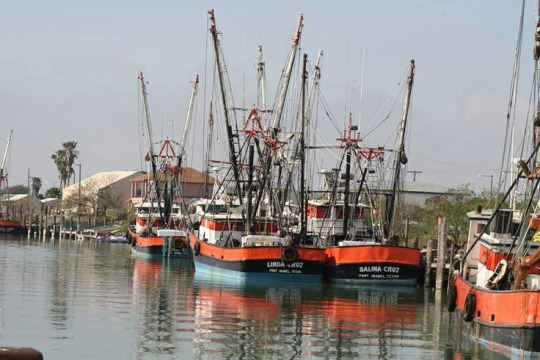
(South Texas Shrimping Boats)
This is serious! And if you or someone you know lives in Texas there is a way you can make a comment and state how you DON'T WANT LITERAL SLUDGE IN THE OCEAN! IT WILL HURT THOUSANDS OF PEOPLE AND ANIMALS AND THE VAST AND DIVERSE ECOSYTEM THEY LIVE IN!
You can find the link here:
PLEASE DO WHAT YOU CAN! WE CAN'T LET MUSK DO THIS!!!
42K notes
·
View notes
Text
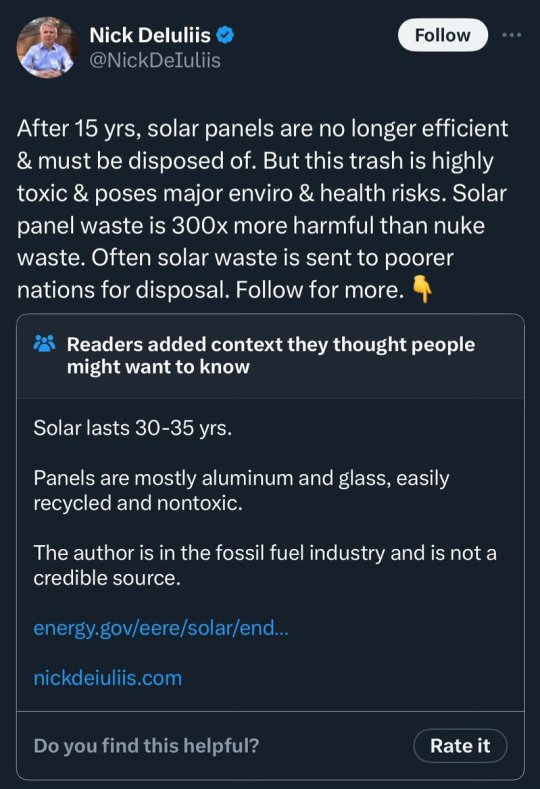
91K notes
·
View notes
Text
Thank you very much for your kind words! I'm very glad I did it right and I'll take your encouragement as a good sign for this blog :)
LGBT-chemistry
This is not really an engineering or energy post, but my nonbinary butt was delighted in school a few days ago to learn about this, so I´ll share it with you anyways :D
So, I always wondered where the prefixes "cis" and "trans" came from. And I knew that it was used scientifically, but I never heard it in any other context than gender. Until I was blindsided a few days ago in my chemistry lesson. I don´t know if the terms originated from chemistry, but they sure are used here!
In chemistry, cis and trans are used to describe structural differences in molecules! For example:
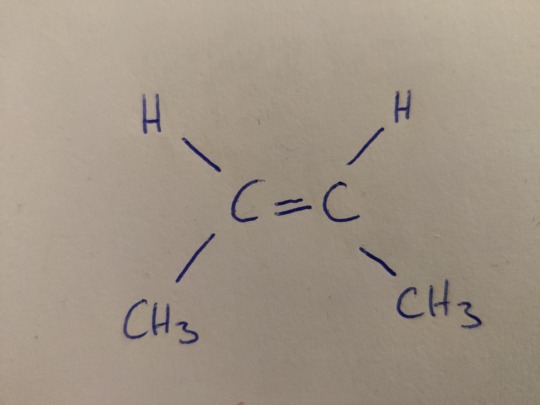
This is butane. It has 4 C-atoms and one double bond. Do you see that the hydrogen-atoms and the C-groups branch off of the molecule in the same direction? This one is called cis - 2 - butane!

This is ALSO butane. Also four C-atoms and a double bond between the 2nd and 3rd C-atom. But here, the hydrogen atoms and the C-groups branch off of the molecule in different directions. This one is called trans - 2- butane!
If you write the chemical formula, they both are written C4H8, the only difference is in the positions of the hydrogen atoms and the CH3 groups.
These differences can be very important, for example in biochemistry and carbohydrate-chains, but I learned that literally today, so I don´t dare to say much about it.
Anyways, I found it interesting that cis means that the same group or atom branches off in the same direction, like if your gender and your gender assigned at birth allign, and trans means that they branch off in different directions, but I´m not a hundred percent sure if that is the actual connection here. I still found it very cool, so take it as the fun fact of today! And if a bigot wants to argue that "cis is a slur that trans people came up with"... Nope, it´s not.
12 notes
·
View notes
Text
LGBT-chemistry
This is not really an engineering or energy post, but my nonbinary butt was delighted in school a few days ago to learn about this, so I´ll share it with you anyways :D
So, I always wondered where the prefixes "cis" and "trans" came from. And I knew that it was used scientifically, but I never heard it in any other context than gender. Until I was blindsided a few days ago in my chemistry lesson. I don´t know if the terms originated from chemistry, but they sure are used here!
In chemistry, cis and trans are used to describe structural differences in molecules! For example:

This is butane. It has 4 C-atoms and one double bond. Do you see that the hydrogen-atoms and the C-groups branch off of the molecule in the same direction? This one is called cis - 2 - butane!

This is ALSO butane. Also four C-atoms and a double bond between the 2nd and 3rd C-atom. But here, the hydrogen atoms and the C-groups branch off of the molecule in different directions. This one is called trans - 2- butane!
If you write the chemical formula, they both are written C4H8, the only difference is in the positions of the hydrogen atoms and the CH3 groups.
These differences can be very important, for example in biochemistry and carbohydrate-chains, but I learned that literally today, so I don´t dare to say much about it.
Anyways, I found it interesting that cis means that the same group or atom branches off in the same direction, like if your gender and your gender assigned at birth allign, and trans means that they branch off in different directions, but I´m not a hundred percent sure if that is the actual connection here. I still found it very cool, so take it as the fun fact of today! And if a bigot wants to argue that "cis is a slur that trans people came up with"... Nope, it´s not.
12 notes
·
View notes
Text
Solar power - taste the sun
Without the sun, we would be (frozen) toast. That much is for sure. The sun directly or indirectly powers most forms of renewable energy: Without the sun, there would be no water cykle, so no water power. The differences in temperature and air pressure, set in motion by the energy of the sun, creates wind. And of course, we can use the sun in an array of ways to help us in our daily lives.
"The power of the Sun at the Earth, per square metre is called the solar constant and is approximately 1370 Watts per square metre (W/m2)." (https://www.sws.bom.gov.au/Educational/2/1/12, Australian Space Weather Forecasting Centre). That is a lot of watts per square meters. The number differs by a few percent depending on time of the year and our actually elliptic orbit around the sun, but there is still a lot of energy to use.
We can use the thermal energy and the light waves of the sun to our advantage in the following ways:
Active solar heating uses solar collectors, water pipes go through a glazed or unglazed panel. The panel is dark coloured to absorb the most of the solar power. The water in the pipes is heated up and can be used for heating.
Passive solar heating uses the warmth of the sun without a panel, it is for example used in passive houses. The heat from the sun enters the house through big windows, the house is so well insulated that it keeps that warmth.
Daylight can be used as a source for light to avoid artificial lighting.
Concentrated solar collectors contain a parabolic structure that concentrates the solar rays in one point. In that point, there is a pipe containing water or a high temperature heat transfer fluid, for example mineral oil. The fluid will then as well be used to create stream for energy production.
Power Towers are... towers. Surrounded by mirrors that all reflect sunlight onto the receiver on the top of the tower. There is a tank containing either water, creating steam for direct energy production, or salt. The concentrated solar power is enough to melt that saltv (melting point is often at over 200°C) and it can be used to either produce steam for electricity directly or it can be stored for a few hours, making 24-hour energy production possible.
Photovoltaic can be used to produce electricity directly from sunlight. It is a pretty cool process, so I´ll explain it a bit more extensive. Photovoiltaic cells have two layers of silicon, a very common mineral, divided by an insulator. Silicon is a semiconductor, that is a material that normally doesn´t have free electrons, which make up electricity, but if you add a bit of energy, it frees electrons and makes an electrical current possible. Now, the two layers of silicon are also "doped" with impurities, the upper layer with, for example, phosphorus, which adds free electrons, and the lower layer with, for example, boron, which adds a slight positive charge. The upper layer is called n-type silicon, the lower layer p-type silicon. If the sun shines on the photovoltaic cell, it frees the electrons from the upper layer. They are naturally driven to the lower layer, which is lacking electrons, but there is an insulator between them. Add a cable that´s conducting electricity, lay it through your house, and connect the upper to the lower level. If the sun hits the solar panel, it frees the electrons, they are travelling through your cable, bam! Electricity! Since that was a bit complicated, here is a picture:

(Source: Cosmos Magazine)
The perk about photovoltaic is that it is made from very common materials and that it can be put virtually everywhere. The downsides of it, and most other forms of solar energy is the obvious: It depends on the sun shining. Only pretty big photovoltaic panels work if it´s cloudy and there are places on the earth where the amount of sunlight varies strongly during the year. I, for example, am living in Sweden and the amount of sunlight hours (if they exist at all) during winter is so small and the angle of the sun so low that solar power just won´t cut it.
However, there are places on the earth where a lot could be done with solar power. Only a small part of the Sahara desert would be needed to cover Africa´s and Europes entire need for energy. Only a small part of Nevada would be enough to cover the US´s. Then of course, the question is how to transfer that energy and the whole power grid would have to be worked over, but sooner or later, we would have to do that anyways. There is a LOT of potential for solar power and the prices for it have gone down significantly in the past years:
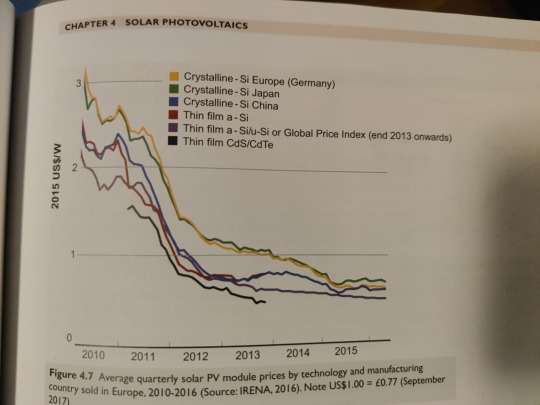
(Source: Peake (2018): Renewable Energy. Power for a sustainable future.)
So that was a bit about solar power. We can hope that this will be a big part of our way to a better, greener, brighter future.
Source for pretty much all of it: Peake (2018): Renewable Energy. Power for a sustainable future. Fourth edition. Oxford university press.
#environmentalism#science#solar power#photovoltaic#nature#climate change#climate action#hope for the future#environmetal engineering#engineering
2 notes
·
View notes
Text
The world energy system
The world energy system is very complex. Surprise. I´m not able to compress everything there is to know about it, and all the factors (economic, social, political...) that influence it, into one post. However, I´ll try to give a first impression.
The first distinction that has to be made is between ENERGY supply, that includes transportation, electricity, heating, cooling, fires for cooking, etc. and ELECTRICITY supply. For example the quite big amount of biofuels and waste in the first graph is based on regions of the world where the main energy that is used is open fires for heating and cooking. They are kindled with collected fire wood, animal dung, etc. The amount of oil unfortunately makes sense if you take into consideration that that includes traffic of all kinds, from cars to container ships.
Right now, the main energy sources are still coal, oil, and natural gas, but also biofuels and waste, nuclear power and a growing slice of solar, wind and other renewables supply the world with energy.
According to the IEA, the International Energy Agency, the energy supply of the world looks like this right now:

(Source: https://www.iea.org/data-and-statistics/data-tools/energy-statistics-data-browser?country=WORLD&fuel=Energy%20supply&indicator=TESbySource)
If we look at the electricity generation instead, the graph looks like this:

(Source: https://www.iea.org/data-and-statistics/data-tools/energy-statistics-data-browser?country=WORLD&fuel=Electricity%20and%20heat&indicator=ElecGenByFuel)
That looks a little bit better. The amount of oil that we use to generate electricity has gone down, and the slice of wind and photovoltaic (PV) has been growing fast. The amount of natural gas has grown, that is true, but natural gas causes less CO2-emissions than oil or coal. It´s not perfect, no. Maybe not even good. But better than covering the demand with coal or oil, that´s for sure. There is much to do, no doubt. But much is happening, too. The costs for renewable energy production is getting lower and lower. More altenative energy sources are being looked into, like tide power, which is such a small amount that it´s not visible on this graph, but neither was solar power 10 years ago.
If you´re interested in the world energy supply and consumption, you find a LOT of data on the IEA website:
Here you can choose world region or country, and energy topic and play around a bit.
If you don´t want to click on a random link on the internet (fair enough!), you can just search for IEA or International Energy Agency, hover over the link "Data" and click on "Data explorers". There is a LOT of information to be found about the energy and electricity supply, sorted by country and world region, and the whole website is a treasure of information about the different kinds of energy production, the effects on the environment and a lot more.
#science#environment#environmentalism#energy#renewableenergy#fossil fuels#international energy agency#climate change#climate action
3 notes
·
View notes
